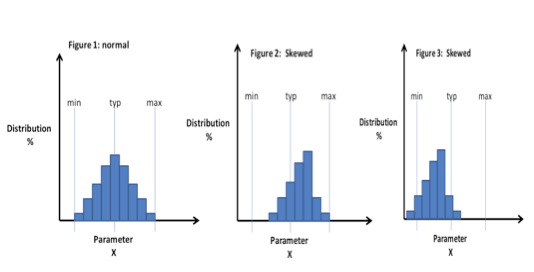In previous posts, I discussed Robust Design analysis as orthogonal Path Finding. This analysis is performed while the design implementation is held constant but with varying manufacturing process parameters. This will determine how sensitive a design is within the process(es) it will be manufactured. The previous post highlighted the negative consequences if a design is released to manufacturing when it is not robust. Figure 1 shows a design that has a good distribution between minimum and maximum limits. Figure 2 shows a design that is skewed toward the maximum limit that might lead to erratic yields depending if the process is under control. Figure 3 shows a design that will have yield issues since the design’s distribution for this parameter exceed the lower minimum limit.
But what happens if your design is NOT robust?
Rather than dive deep into specific root cause issues and how to resolve, I will focus on the process. The key to this analysis is to identify the variables that affect your design’s performance. Once these are identified, the Path Finder needs to prioritize which variables have the greatest negative impact AND determine if any variables interact with other variables.¹ The remaining discussion will focus on single variables that do not interact with other variables.
For a company that owns the manufacturing process or has the clout to alter a process, you can modify the process to help center your design. As an example: each IC manufactured in a semiconductor line has a cookbook that is followed denoting all masks, resists, dopants/concentrations, time, etc. This is similar to mixing and baking a cake. Cake mix producers realized that various parameters affect the quality and taste of a baked cake. Elevation above sea level is one parameter that requires the ‘cookbook’ to be revised to improve the results by altering ingredients and/or baking time/temperature. The same ‘tweaking’ is performed for a manufacturing process cookbook for a given design.
For a company that does not own or have influence on altering a process, their only option is to change their design and center it within the process. A little more challenging, but additional experiments are performed to identify implementation changes to center the design. An example would be resistivity (inverse of conductivity). This is an easy process change (if you could change the process) but if the process is fixed, then the design would need to be changed. Inside the design, the resistivity can be altered by changing the physical attributes of vias (diameter and height) and planar metal (length, width and thickness). Experiments can be performed to determine what physical changes are required to allow your design to be centered.
From the above, it should be obvious that Robust Design is not only critical, but extremely valuable during the manufacturing phase: the phase that creates the products that generate revenue when products are sold. ~ B. Martin
Notes:
1. There are plenty of books and internet postings that discuss Design of Experiments (DoE) and how to optimize experimentation (reduce the number of experiments required).




















